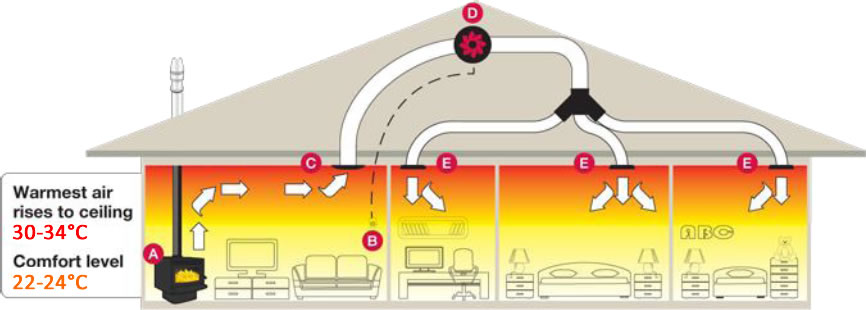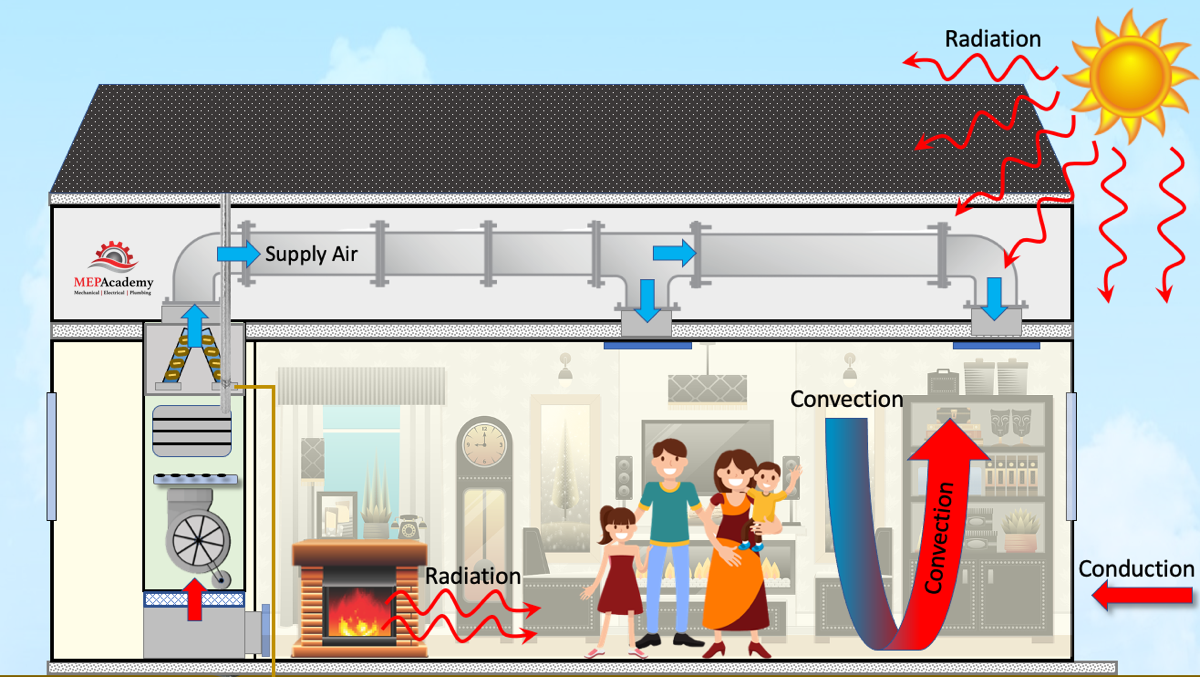A Comprehensive Guide to Selecting the Right Heat Transfer Solutions for Your Needs
Picking the ideal Heat transfer system is vital for operational effectiveness. Various systems provide to various requirements, influenced by variables such as temperature level range and liquid kind. Understanding the principles behind Heat transfer, such as convection, transmission, and radiation, is critical. In addition, examining power resources and maintenance practices can affect long-term efficiency. A closer evaluation of these factors to consider exposes just how to customize a system to certain requirements. What should one prioritize in this complicated decision-making procedure?
Understanding Heat Transfer: Trick Concepts and Concepts
Although Heat transfer may appear like a simple principle, it incorporates a range of principles that are fundamental for efficient system layout. Understanding these concepts is necessary for developers and designers who aim to maximize thermal performance in different applications. Conduction, for example, entails the transfer of Heat with solid materials, while convection refers to the movement of Heat within liquids. Radiation, one more essential concept, defines how Heat can be transferred through electro-magnetic waves. Each of these systems plays an essential function in establishing how power relocates within a system. By thoroughly understanding these concepts, specialists can make educated decisions, ensuring that Heat transfer systems operate successfully and fulfill the details demands of their applications
Sorts Of Heat Transfer Systems: An Overview
Understanding the principles of Heat transfer lays the groundwork for exploring the numerous sorts of Heat transfer systems offered. Heat transfer systems can be categorized primarily right into three kinds: radiation, conduction, and convection. Transmission involves Heat transfer via strong materials, counting on direct call between particles. Convection, on the various other hand, occurs in fluids (gases and liquids) where the activity of the liquid itself assists in Heat transfer. Radiation involves the transfer of Heat through electromagnetic waves and does not need a medium, permitting it to happen in a vacuum. Each sort of system has unique features and applications, making it essential for people and organizations to carefully analyze their details requirements when picking the most ideal Heat transfer solution.
Applications of Heat Transfer Systems in Different Industries
Heat transfer systems play a vital role across numerous sectors, impacting performance and product high quality. In commercial manufacturing procedures, they help with specific temperature control, while in food and drink processing, they ensure safety and conservation. Furthermore, a/c and climate control systems depend heavily on efficient Heat transfer to keep comfy settings.
Industrial Manufacturing Processes

Various industrial manufacturing processes count heavily on reliable Heat transfer systems to make best use of efficiency and improve item quality. In industries such as metalworking, Heat exchangers play an important duty in maintaining optimal temperature levels during welding, casting, and building. These systems assure consistent Heat distribution, which is important for accomplishing preferred product residential properties. Similarly, in the chemical manufacturing industry, Heat transfer systems facilitate accurate temperature level control throughout responses, affecting return and safety and security. In addition, in fabric production, reliable Heat administration is necessary for coloring and ending up procedures, affecting color uniformity and fabric quality. By choosing suitable Heat transfer technologies, manufacturers can improve power effectiveness and decrease operational prices, eventually resulting in an extra lasting and competitive production setting.
Food and Beverage Processing
Effective Heat transfer systems are just as vital in the food and beverage handling industry, where maintaining perfect temperature levels is essential for food security and quality. These systems play a necessary function in procedures such as pasteurization, sterilization, and food preparation, guaranteeing that products are safe for intake and maintain their nutritional worth. Heat exchangers, for circumstances, successfully move Heat in between liquids, enhancing power usage while reducing temperature level changes. Furthermore, refrigeration systems are basic for extending and preserving disposable items life span. The selection of Heat transfer technology straight affects operational efficiency and item stability, making it necessary for food and beverage producers to choose the ideal systems tailored to their particular handling demands. This mindful selection eventually adds to customer satisfaction and food safety.

Heating And Cooling and Environment Control
While numerous markets rely upon Heat transfer systems for effectiveness, HVAC (Home Heating, Air Flow, and A/c) plays an important duty in maintaining indoor environment control across numerous setups. These systems utilize Heat transfer principles to manage air, temperature, and moisture quality, making sure convenience and safety in property, business, and commercial environments. Appropriately made heating and cooling systems improve power effectiveness, reduce operational expenses, and lessen environmental impact. In commercial buildings, as an example, effective environment control adds to employee productivity and consumer fulfillment. In industrial applications, a/c systems aid keep perfect conditions for devices operation and product preservation. Selecting the appropriate Heat transfer system is vital for meeting particular climate control requirements and attaining total system efficiency.
Examining Energy Resources for Heat Transfer Equipments
In examining energy resources for Heat transfer systems, a contrast of renewable resource alternatives and fossil fuel considerations is necessary. Eco-friendly resources, such as solar and wind, deal sustainable alternatives that can reduce ecological impact. Conversely, fossil gas continue to be prevalent due to their recognized framework and power density, prompting a careful assessment of both options.
Renewable Power Options

Nonrenewable Fuel Source Factors To Consider
Evaluating nonrenewable fuel source considerations is necessary for the effectiveness and sustainability of Heat transfer systems. Nonrenewable fuel sources, such as gas, oil, and coal, are traditional energy resources that give considerable Heat output, making them prominent options for household and industrial applications. Nonetheless, their ecological effect, consisting of greenhouse gas emissions and source depletion, raises worries. When choosing a warmth transfer system, it is essential to assess the schedule, price, and regulatory aspects linked with these gas. Furthermore, the performance of nonrenewable fuel source systems should be taken into consideration, as higher effectiveness can alleviate some environmental downsides. Ultimately, a balanced method considering efficiency and sustainability can lead decision-makers toward one of the most proper Heat transfer service for their specific requirements.
Elements to Take Into Consideration When Picking a Warmth Transfer System
Choosing an ideal Heat transfer system needs mindful consideration of different variables that can significantly affect performance and efficiency. One crucial element is the operating temperature level array, which determines the products and layout ideal for the application. In addition, the kind of liquid made use of in the system-- whether gas or liquid-- impacts Heat transfer effectiveness and compatibility. The system's size and capability should align with the details demands of the procedure to prevent inefficiencies. Power resource accessibility is also important, affecting operating expense and sustainability. The installation atmosphere, consisting of space constraints and availability for upkeep, plays a considerable function in system selection. Regulatory conformity and safety standards should be considered to ensure the system meets all legal requirements.
Maintenance and Performance Optimization for Heat Transfer Equipments
Preserving Heat transfer systems is vital for ensuring optimal efficiency and durability. Routine maintenance activities, such as cleaning up Heat exchangers and inspecting insulation, help stop efficiency losses due to fouling and thermal connecting. Additionally, keeping track of system criteria, including pressure and temperature level, enables very early detection of anomalies, lessening downtime and costly repair work. Carrying out a precautionary upkeep timetable can optimize performance and expand the life-span of components. Furthermore, updating to innovative control systems can improve functional efficiency by adjusting to varying problems and tons. By prioritizing maintenance and efficiency optimization, drivers can accomplish reduced power intake, reduced functional prices, and boosted overall system reliability, ultimately leading to far better resource utilization and a much more lasting procedure.
Future Patterns in Heat Transfer Technologies
As markets progressively focus on sustainability and power effectiveness, future patterns in Heat transfer technologies are readied to undergo significant changes. Technologies such as innovative products, consisting of carbon nanotubes and nanofluids, guarantee improved thermal conductivity and efficiency. Additionally, the integration of eco-friendly energy resources right into Heat transfer systems is getting momentum, promoting environment-friendly solutions. Smart modern technologies, including IoT sensors, are expected to revolutionize surveillance and control, making it possible for real-time data analysis for optimized performance. The development of modular and compact systems will assist in simpler installment and upkeep, catering to varied applications. These innovations suggest a shift in the check my site direction of more lasting, efficient, and versatile Heat transfer options, aligning with global energy objectives and ecological criteria.
Frequently Asked Inquiries
What Are the Environmental Influences of Heat Transfer Solutions?
The ecological effects of Heat transfer systems can Click This Link include greenhouse gas exhausts, energy usage, and prospective thermal pollution. In addition, inappropriate disposal of products and inadequacies can contribute to source deficiency and ecosystem interruption.
Just how Do I Compute the Cost-Effectiveness of a Heat Transfer System?
To compute the cost-effectiveness of a warm transfer system, one should examine first prices, operational costs, maintenance needs, and power efficiency, comparing these aspects versus the expected life-span and performance of the system.
Can Heat Transfer Systems Be Utilized in Residential Settings?
Heat transfer systems can undoubtedly be utilized in property setups. They supply reliable heating and cooling services, making homes a lot more comfy while possibly decreasing power prices. Their versatility permits various applications in domestic environments.
What Safety Laws Put On Heat Transfer Solutions?
Safety policies for Heat transfer systems generally consist of standards on installment, maintenance, and procedure. Conformity with regional structure codes, maker specs, and industry standards is important to guarantee effective and secure system efficiency in different applications.
Exactly How Do Different Materials Affect Heat Transfer Efficiency?

Conduction, for instance, entails the transfer of Heat through solid materials, while convection refers to the movement of Heat within liquids. Understanding the principles of Heat transfer lays the groundwork for checking out the different types of Heat transfer systems available. Heat exchangers, for instance, effectively move Heat in between fluids, enhancing energy use while minimizing temperature changes. In examining energy sources for Heat transfer systems, a comparison of renewable power options and fossil fuel considerations is vital. Metals, such as copper and aluminum, conduct Heat properly, whereas insulators like rubber and glass slow down Heat circulation.